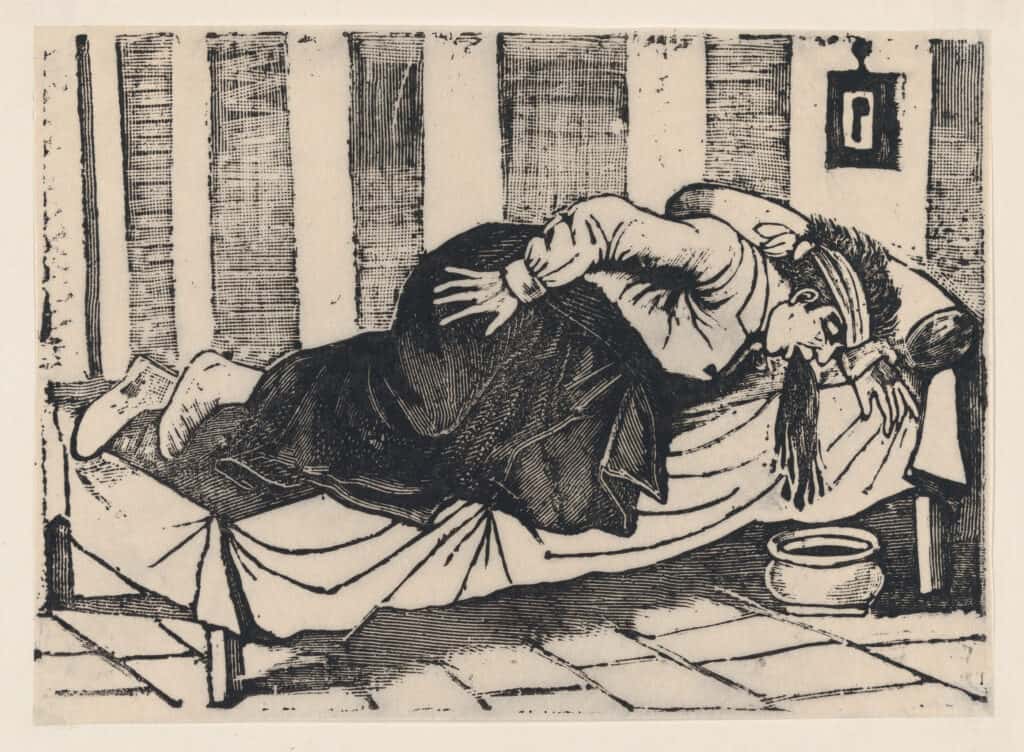Yellow Fever: A Nineteenth-Century Scourge
“To the cure of this malady, neither medical knowledge nor the power of drugs was of any effect. Such terror was struck into the hearts of men and women by this calamity, that brother abandoned brother…and very often the wife her husband. Such was the multitude of corpses brought to the churches every day and almost every hour that there was not enough consecrated ground to give them burial… They were forced to dig huge trenches, where they buried the bodies by hundreds.”
Giovanni Boccaccio made these statements upon observing the Black Death’s ravages in 1348, but even centuries later in St. Marys, these statements rang true. On this third anniversary of the world’s shutting down due to COVID-19, we explore epidemics locals of St. Marys endured, particularly yellow fever.

While St. Marians suffered from such ailments as malaria, Spanish flu, smallpox, and dropsy, yellow fever wreaked havoc for decades from the early nineteenth century. This disease, which occurred year-round but mainly from May to November, attacked quickly with severe back pain, painful suppression of urine, and jaundice followed by hemorrhaging of the gums, nose, and stomach. Terminal symptoms were black vomit, convulsions, delirium, and a coma, leading many doctors to believe that some patients were buried alive.
Yellow fever was introduced to the West Indies from Africa in the 1640s and was maintained by the regular introduction of infected mosquitoes on slave ships. Infected mosquitoes most likely laid eggs in water supplies aboard ships; hatchlings then carried the infection to swamps and stagnant water near populated areas. Therefore, this disease was most prevalent at ports such as St. Marys, but until the late nineteenth century, no one knew what caused yellow fever so people were suspected to be carriers.

Burials in St. Marys’ Oak Grove Cemetery tell us the spread of such diseases as yellow fever came often with no warning and no known cures, sometimes wiping out entire families. One such family were the Pattersons; Colonel John Patterson, aged 52, was followed by his nineteen-year-old daughter, her eighteen-month-old son, and other eight- and seventeen-year-old relatives, all of whom died within a few days of each other in 1801.
The years between 1801 and 1808 were especially brutal to inhabitants of St. Marys. According to local lore, the epidemic killed so many people so fast that the healthy could not tend the sick and dig enough graves at the same time. During another outbreak brought from Savannah in 1820, so many people died that their bodies were just burned in the little tidal creek which crosses St. Marys Street southeast of the cemetery.

In both 1854 and 1856, yellow fever raged in Savannah, causing many residents there to seek refuge in St. Marys. In response, the local town council decided in 1854 that “a quarantine should be laid on all steamboats, vessels, and boats coming from [Savannah].” However, the influx of the ill from that port city caused St. Marys residents to flee themselves, while many who stayed succumbed to the disease. For instance, the Cooper family on Weed Street suffered devastation in 1856, as Stiles Cooper, his mother, and his sister Miranda Valentine died. Miranda’s husband, a Methodist minister, got sick but recovered.
It was not until 1881 that Carlos J. Finlay conjectured that the Aedes aegypti mosquito was the carrier of yellow fever, a hypothesis which Walter Reed proved with his experiments in 1900. A vaccine against yellow fever has existed since the middle of the twentieth century, and the World Health Organization now estimates that yellow fever causes 200,000 illnesses and 30,000 deaths – 90% of which occur in Africa – every year in unvaccinated populations.
Therefore, while we may rest easily knowing yellow fever is not a threat as it was for our ancestors, we may find connections with them in the fear and uncertainty we felt in our recent epidemic. This article teaches us that we are not alone in history. Let us hope that our experience over the last few years can educate those suffering from epidemics in the future just as victims of the past have educated us.
Learn more about St. Marys’ history on our St. Marys Walking Tour and St. Marys Murder, Mayhem, and Martinis Walking Tour!



